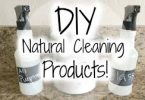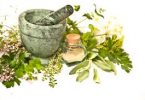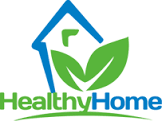 A healthy home is a happy home, we can all agree on that. But how can you make your home healthier for you and your animal companions? These suggestions are divided into 4 areas: Cleanliness, Diet, Environment and Lifestyle.
A healthy home is a happy home, we can all agree on that. But how can you make your home healthier for you and your animal companions? These suggestions are divided into 4 areas: Cleanliness, Diet, Environment and Lifestyle.
Cleanliness
1.) USE SAFE CLEANING AGENTS
Did you know that most brand name all purpose cleaners, bleach, floor wax or polish, glass cleaner and disinfectant dish soaps contain hazardous materials? Read the list of cautions on the back of these labels. These common household agents can cause respiratory problems, damage the nervous system, cause diarrhea, dizziness, liver damage and cancer. However, there are effective and safe alternatives close at hand.
White vinegar can be mixed with water and used to clean glass, porcelain, counter tops and tile. Vinegar can also be mixed with salt to create an all purpose cleaner. Baking soda can be mixed with water and used to scour tubs and sinks. It can also be sprinkled on carpets to remove odors.
When washing vinyl floors, add a few teaspoons of vinegar to the wash water to remove waxy build up, a capful of baby oil added to the rinse water will polish the floor.
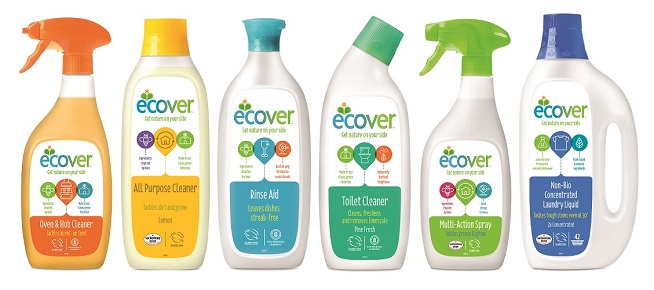
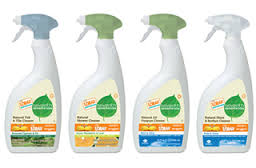
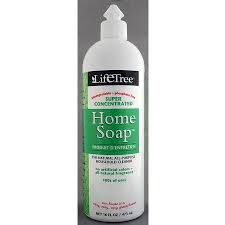 Today, there are a number of safe commercial cleaning products available, look in your local health food store, Trader Joe’s and Whole Foods.
Today, there are a number of safe commercial cleaning products available, look in your local health food store, Trader Joe’s and Whole Foods.
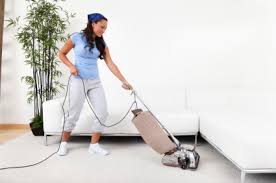 2.) VACUUM FREQUENTLY
2.) VACUUM FREQUENTLY
A powerful vacuum is a pet owner’s best friend. A model with strong suction and multiple attachments can not only keep the sofa, the rug, and your clothes dog hair free, but also prevent fleas from completing their life cycle in your home. Not everyone cares about their clothes being dog hair free, but everyone hates fleas!
Fleas spend only a portion of their time on the dog, and their eggs, larvae and pupae are likely to be found in any area where the dog lives. Female fleas are prolific, laying as many as 20 to 50 eggs per day for as much as 3 months. Development of the larvae that hatch out of the eggs takes place off the dog, usually on or near the pets bedding and resting areas. Concentrating your efforts on removing the opportunities for the eggs to develop is the most effective population control strategy.
The best way to remove the egg’s opportunities to develop is to remove the eggs, and to this end, your vacuum will be your most valuable tool in the flea war. Vacuum all the areas that your pet uses frequently, at least every two to three days. Since fleas locate their host by tracing the vibration caused by footsteps, vacuuming the most highly trafficked hallways and paths in your house will be the most rewarding.
Don’t forget to vacuum underneath cushions on the couches or chairs your dog sleeps on. Change vacuum bags frequently, and seal the bag’s contents safely in a plastic bag before disposing.
3.) WASH YOUR DOG’S BED
Flea eggs and developing larvae cannot survive getting wet. A dog who has fleas will have flea eggs in his bed, since fleas usually lay their eggs off the dog. So, if fleas are a problem in your home, wash his bedding frequently. It’s not necessary to use bleach, or insecticidal or detergent soaps, all of which can irritate your dog’s skin, plain water kills flea eggs and larvae. If you can’t wash the dog’s entire bed, at least wash the floor underneath the bed as often as you can. Purchase several sheets or covers (or sheets and towels) for the bed and rotate them in and out of the wash.
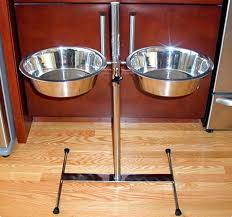 4.) WASH DOG BOWLS DAILY
4.) WASH DOG BOWLS DAILY
Washing your dog’s food and water bowls with soap and hot water will not only make them look better and make the dog’s food and water more attractive to him. This practice will also kill any harmful bacteria that may attempt to grow there. These bacteria can cause mild or severe gastrointestinal upset or even lethal food poisoning.
If you feed your dog raw meat, it is imperative that you wash his bowls thoroughly every day, even if they look clean from his attentive licking. Most dog’s can handle exposure to a certain amount of the pathogenic bacteria that may be present on raw meat, but these bacteria can quickly reproduce to overwhelming levels at room temperature.
While were on the topic, the safest bowls are stainless steel. Glass bowls are inert, but they can break underfoot in a busy kitchen. Some ceramic bowls, particularly foreign made or very old ceramic dishes, may allow lead to leech into the dog’s food and water. Leaching may occur from plastic bowls too, and many dogs develop an allergy to plastic, characterized by a rash or acne on their chin and lips. Stick with stainless!

5.) DIET-FEED YOUR DOG THE BEST DOG FOOD
Advocates of homemade diets have a saying, “You can pay for fresh real food now, or you can pay the veterinarian later”. Dogs have thrived on our table scraps for thousands of years, eating what we eat is good for them-as long as what we eat is healthy. If you can, feed your dog a homemade diet that includes fresh meats, fresh, raw bone, fresh organ meat, and fresh or lightly steamed vegetables, with occasional additions of grains, dairy products, eggs, fish and fruit.
If you can’t see your way to feeding your dog “real food” feed him the best quality kibble or canned food you can afford. Supplement the commercial food with occasional healthy treats from your table-not the unhealthy fat cut off from your steak, nor old, smelly food from the back shelf of your refrigerator. Add some of the leftover steamed vegetables to his dinner. Make a little extra brown rice or oatmeal and mix it into his breakfast.
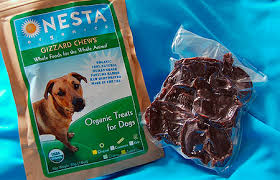 6.) FEED ONLY HEALTHY TREATS
6.) FEED ONLY HEALTHY TREATS
Just like us, dogs are better off eating healthful snacks, rather than loading up on sugary, fatty treats that are dyed with artificial colors and preserved with artificial preservatives.
If you buy treats, look for products with simple ingredient lists. You want to see healthy food ingredients, not a lengthy list of chemicals. Sweet treats should contain natural sweeteners, such as fruit or honey, rather than unhealthy sweeteners such as high fructose corn syrup. Meaty treats should contain dried or dehydrated muscle meat or organ (liver is a canine favorite) from a named species of animal (chicken, beef, lamb) rather than meat by products or unnamed species such as “meat” or “animal fat”.
 7.) PROVIDE FRESH, CLEAN WATER
7.) PROVIDE FRESH, CLEAN WATER
It’s not enough for dogs to have a bowl full of water at their disposal at all times-they should have a clean bowl full of fresh, pure water at their constant disposal. In this day and age that means filtered water. water free from chlorine and flouride.
Many people fill the dog’s bowl only when it’s bone dry, and fail to wash it out until it turns green with algae. For shame!! Dog’s drink more when they have fresh water, and for normal, healthy dogs drinking water is a good thing. Water helps regulate all the body’s systems.
At least two or three times per day, dump out the water in your dog’s bowl and refill it with fresh water. Once a day, wash the bowl with hot, soapy water.
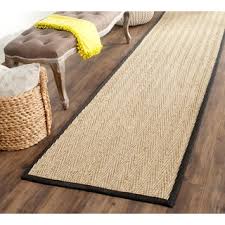 8.) PROVIDE NON SLIP SURFACES
8.) PROVIDE NON SLIP SURFACES
Whether they are polished wood or shiny vinyl, the smooth, glistening floors that most of us aspire to own pose certain risks to certain dogs. Dogs who are arthritic or who have suffered physical injuries can really hurt themselves by slipping on slick floors.
For these dogs, use carpet or sisal grass runners in hallways or other areas where your dog needs traction. Surround his food and water bowls with a rubber backed rug so he can lower his head to eat or drink without his hind legs slipping out from under him.
 9.) DON’T SMOKE NEAR YOUR DOG
9.) DON’T SMOKE NEAR YOUR DOG
You already know you shouldn’t smoke, for your own health. But did you know that second hand smoke has been associated with lung and nasal cancer in smoker’s dogs.
Studies have shown that dogs who live with smokers are more likely to have cancer than dogs that live with non smokers. Long nosed dogs with nasal cancer were 2.5 times more likely to live in smoking households than among non smokers. Short nosed dogs with lung cancer were 2.4 times more likely to live with a smoker.
If you must smoke, do it outside, and away from your dog. Never smoke in an enclosed space such as a closed room (or, worse, a car) with your dog in it.
 10.) EMERGENCY NUMBERS READY
10.) EMERGENCY NUMBERS READY
Every phone in your house should have a list of emergency numbers next to it. Emergency services, your doctor, dentist, and close family members or friends. If you own a dog, that list should include the number for your veterinarian, holistic practitioner, all night and weekend emergency clinic, and poison control center.
You should also list numbers for a couple of your dog loving friends, people who could enter your house and care for your dog if something happened to you. If you travel with your dog, make sure you also have these numbers with you. You don’t want to be scrambling for any of these in a real emergency. Nowadays less and less people have land lines. If you primarily use your cell phone, be sure to have these numbers handy in your contact list.
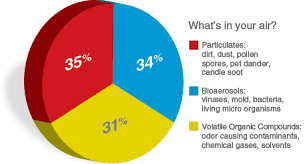 11.) PRESERVE AIR QUALITY
11.) PRESERVE AIR QUALITY
Most of us think of our homes as safe havens, but few are aware that when it comes to air, anyway, the inside of our house tends to be far more dangerous than the outside. The air in the average home is 2-20 times more polluted than the air outside. It’s not unheard of for the concentrations of dangerous air pollutants in homes to rise to 100 times the concentration outdoors!
Even low concentrations of volatile chemicals can cause chronic or acute illness, cancer, and even genetic mutations in humans and companion animals.
Dogs are particularly at risk. Many common solvents are heavier than air, they sink to the floor level, where our dogs spend most of their time. And dogs have a faster respiratory rate than we do, pound for pound, they end up breathing more “bad air” than we would in the same environment.
There are many ways to improve the air in your home. Limit, better yet, eliminate, petroleum based products in your home, all of these substances release health damaging chemicals into the air. Use natural cleaning products. Open the windows in your home at least once a day, for enough time to fill the place with fresh air. Place non toxic houseplants throughout your home; they can improve air quality by removing carbon dioxide and releasing oxygen. Don’t use chemical air fresheners; use scented flowers or dried herbs to lend a harmless perfume to your home instead.
 12.) HANDLE AIR POLLUTANTS CAREFULLY
12.) HANDLE AIR POLLUTANTS CAREFULLY
If you were as familiar as toxicologists are with the health effects of indoor air pollution, you really wouldn’t consider bringing home most, if not all, housekeeping or yard chemicals.
Say there is a potentially dangerous product-a mineral spirits paint remover, for example-that you deem necessary to use in a home improvement project. Do a little homework, and see if there is a safer alternative (there usually is). If you just can’t, or won’t fins an alternative, at least take the following precautions.
Buy just the amount you think you will need for the project. Schedule the activity so that it occurs when the weather is mild enough for you to thoroughly ventilate your home while the product is in use and for at least a couple of weeks afterward.
 13.) PICK UP FECES
13.) PICK UP FECES
We all know that poop smells bad. It also attracts flies and can spread worms. The larvae of tapeworms, hookworms and roundworms are all expelled in a dogs feces. Any dog, or person, for that matter, who comes into skin or mouth contact with larvae-contaminated feces can become infected with the worms.
Ideally, everyone would pick up their dog’s feces daily. This would prevent worms, coprophagia, (dogs who eat their poop), dirty looks from neighbors, and delays for emergency shoe cleaning.
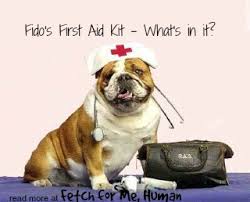 14.) KEEP A FIRST AID KIT HANDY
14.) KEEP A FIRST AID KIT HANDY
Just as you plan and prepare your dog’s daily meals and training, advanced planning and preparation for the unthinkable accident may help save your dog’s life during the critical time between the beginning of the emergency and access to veterinary care.
Plan before your dog has an accident. Gather the contents for a holistic first aid kit today. It might contain Rescue Remedy for shock and to relieve stress or anxiety, gauze pads, cotton, tape, Q-tips, pure water, distilled or spring, a clean glass or plastic spray bottle, elastic bandages, adhesive tape, tweezers, hydrogen peroxide, soap, castile or other natural type, and herbal cleansing solutions such as calendula and hypericum.
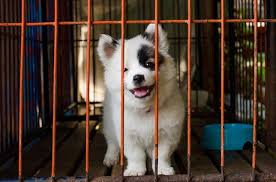 15.) CHEW PROOF THE HOUSE
15.) CHEW PROOF THE HOUSE
Not all dogs are apt to chew on random things around the house when they are bored and unsupervised, though some are. All puppies have this proclivity.
Dogs who chew, and all puppies, should not be left unsupervised in any room where there are items that could be dangerous if chewed. This includes exposed electrical cords, clothing or shoes, electronic items (cameras, remote controls, cell phones), and just about any toys. When left unattended, vulnerable individuals should be safely confined to a crate or puppy pen.
 16.) KEEP YOUR YARD GREEN
16.) KEEP YOUR YARD GREEN
Don’t use pesticides in your yard. Ever! These virulent chemicals can cause every sort of illness known to man or dog. There are plenty of safe, organic compounds that can help you control pests and keep your lawn healthy without pesticides. Read labels, follow directions completely, and avoid exposing your dog to even the safest of products.
Also, if your dog has chronic ill health and is exposed to lawn chemicals on a regular basis, whether through your own gardening practices, a neighbors, or through recreation or public lawns, consider having your veterinarian conduct tests to determine whether pesticides could be the cause.
LIFESTYLE

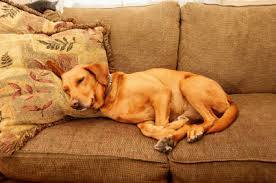 17.) BALANCE YOUR DOG’S TIME
17.) BALANCE YOUR DOG’S TIME
Those of us who live chaotic lives tend to dream and crave days of quiet, restful sleep. People who are housebound and depressed can benefit from activity and stimulation. Balancing rest and action gives the body the opportunity to stress and then rebuild tissues, and lends the individual a healthy ability to cope with whatever life throws his or her way.
Dogs are no different. Some live incredibly stressful, busy lives and could use more rest-dog’s who go to work with their owners, for instance, may benefit from a few hours a day of protection from noise and visitors. Dogs who are understimulated will benefit from mild physical exercise and mental challenges.
 18.) EXERCISE
18.) EXERCISE
Exercise is good for all dogs-within reason, and within the dog’s abilities. As always, balance is the key. An extremely long run or vigorous romp at the dog park on a daily basis may excessively stress the dog’s joints and muscles, and deny him the opportunity to repair damaged tissues, resulting in stress fractures, arthritis, or strained muscles and ligaments. Strenuous workouts such as these should be limited to two or three days per week, even for healthy, fit dogs. Alternate hard workouts with shorter, easier exercise sessions, such as walks or short backyard play sessions.
There are far more dogs receiving too little exercise than dog’s who get too much. Many people with old dogs, super fat dogs, or dogs with physical handicaps feel that it’s cruel to make their dogs go for walks. But the more muscle tissue and coordination the dog has, the better, he’ll lose both if he’s not at least walking a little, a few times per day.
 19.) SOCIALIZE
19.) SOCIALIZE
Dogs and humans are social, loners are aberrations, not the rule, in either species. Dogs and humans should be able to greet each other happily, communicate well, and part easily from their friends. It’s well worth the effort to properly socialize your dog to canine and human visitors to the home.
Ask any friend who stops by to feed your dog a handful of treats, one at a time, to help your dog understand that strangers can be a good thing. Use a tether or baby gate to keep an over exhuberant or overprotective dog from unseemly behavior. Arrange occasional play dates with healthy dogs with compatible temperaments.
 20.) SPEND QUALITY TIME TOGETHER
20.) SPEND QUALITY TIME TOGETHER
Most of us want dogs who like and trust us and whom we like and trust. We want to be able to take them places without them embarrassing us. We want our dogs to pay attention to us, and we want them to understand what we are trying to tell them and to comply with most of our requests without yelling or repeating ourselves.
The health of every relationship depends on the individuals spending time together-and not just on infrequent weekends, and not just laying around watching TV.
To improve your relationship with your dog, take up a hobby together. Walking, squirrel chasing, agility, fly ball. Work on honing your communication skills. Teaching your dog new tricks is a great way to bond, improve his manners, entertain you, and impress your friends. The more time you spend playing with your dog, training your dog, or just lying around and petting or massaging your dog, the better your relationship will be!
The Whole Dog Journal


